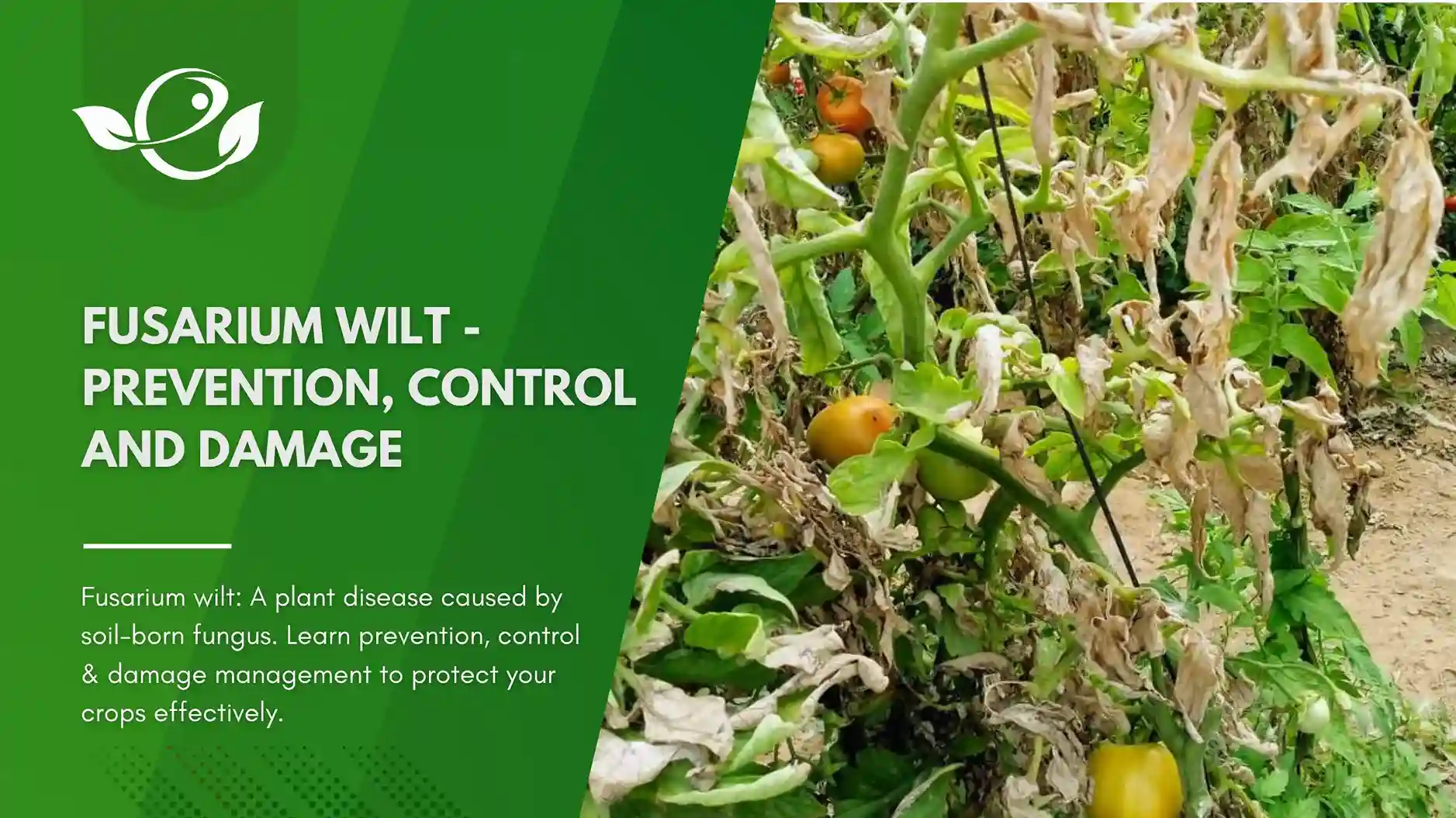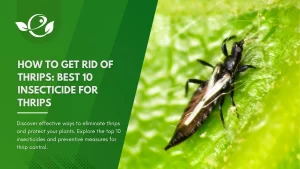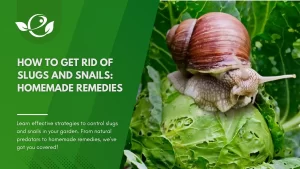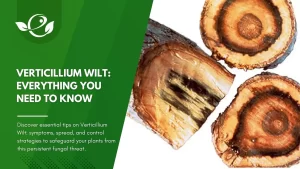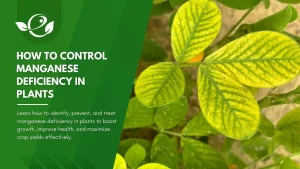Table of Contents
In the vast and complex world of agriculture, there are few challenges as persistent and devastating as plant diseases. Among these, Fusarium wilt stands out as a formidable adversary that has plagued farmers and gardeners for centuries. Its insidious nature, stealthy spread, and capacity to decimate crops make it a subject of deep concern for anyone involved in plant cultivation. This disease, caused by the soil-borne fungus Fusarium oxysporum, can strike with little warning, turning lush, thriving fields into barren landscapes of wilted and dying plants.
But Fusarium wilt is not just a challenge; it is a call to arms for those who nurture the earth. Understanding this disease—its causes, its symptoms, and its life cycle—is the first step in mounting an effective defence. Yet, understanding alone is not enough. The war against Fusarium wilt requires a multi-faceted approach, combining prevention, control, and mitigation strategies to protect crops and livelihoods.
This article delves into the heart of Fusarium wilt, offering a detailed examination of how this disease operates, the damage it causes, and most importantly, how it can be managed. Whether you are a seasoned farmer, a home gardener, or simply someone with a passion for plants, this comprehensive guide will equip you with the knowledge and tools you need to fight back against Fusarium wilt and preserve the health and productivity of your crops.
Understanding Fusarium Wilt
Symptoms of Fusarium Wilt
The first line of defence against Fusarium wilt is early detection. Recognizing the symptoms of this disease is crucial for timely intervention. Fusarium wilt typically manifests through a series of progressive symptoms that begin subtly but can quickly escalate if left unchecked.
- Wilting: One of the earliest signs is the wilting of leaves, often beginning with the lower foliage and gradually moving upward. This wilting occurs even when soil moisture is adequate, making it a key indicator of a problem beyond simple drought stress.
- Yellowing: As the disease progresses, affected leaves may start to yellow, particularly along the leaf veins. This chlorosis is a result of the plant’s vascular system being compromised by the fungus, which blocks the transport of water and nutrients.
- Stunted Growth: Infected plants often exhibit stunted growth. This is due to the inability of the roots to absorb nutrients effectively, leading to overall poor plant health and reduced vigour.
- Vascular Discoloration: Upon cutting the stem of an affected plant, a brown or reddish discolouration of the vascular tissue is often visible. This is a hallmark of Fusarium wilt and a clear sign that the plant’s internal transport system has been invaded by the fungus.
- Root Rot: In severe cases, Fusarium wilt can lead to root rot, where the roots of the plant decay and lose their functionality. This further exacerbates the plant’s inability to sustain itself, leading to its eventual death.
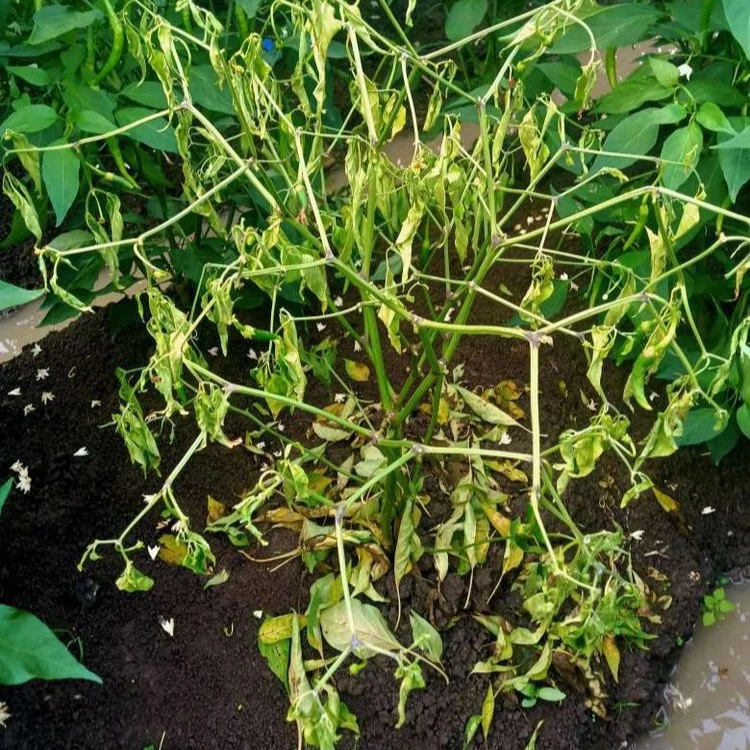
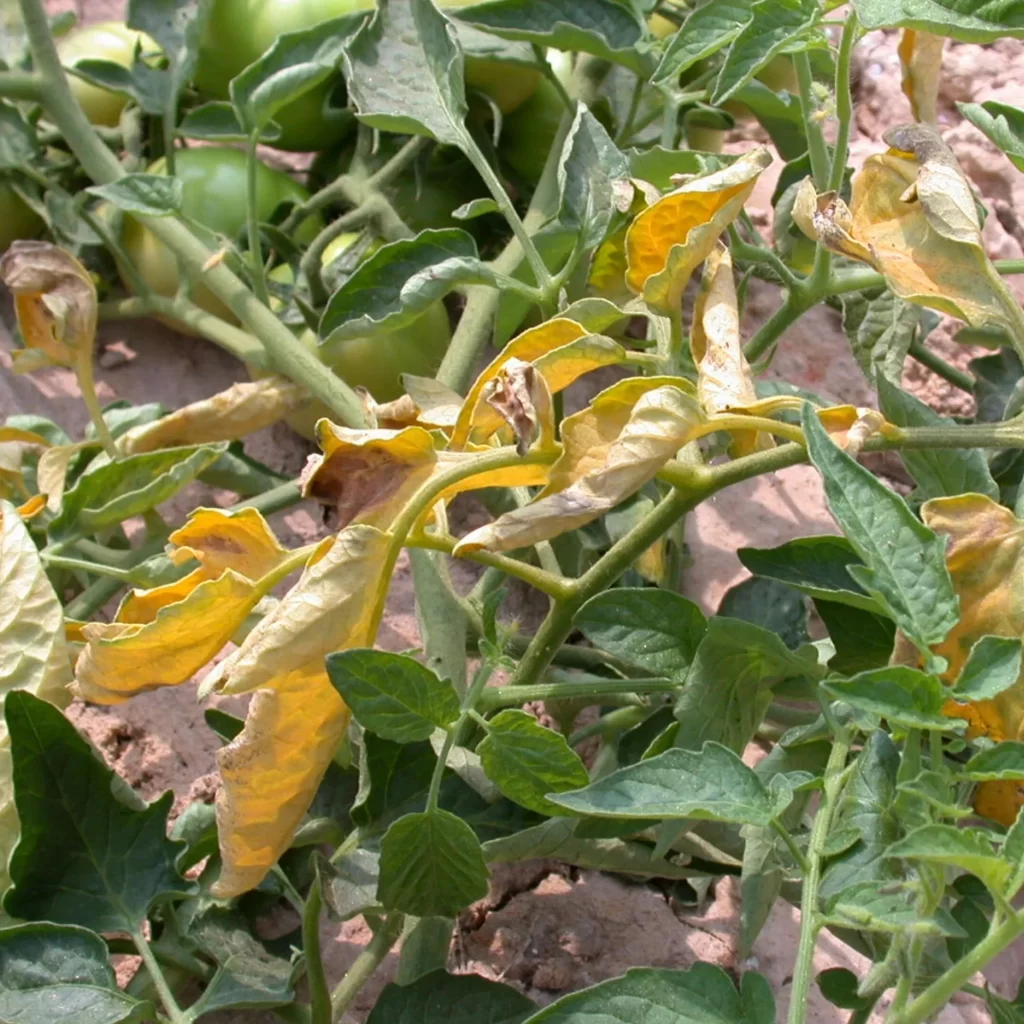
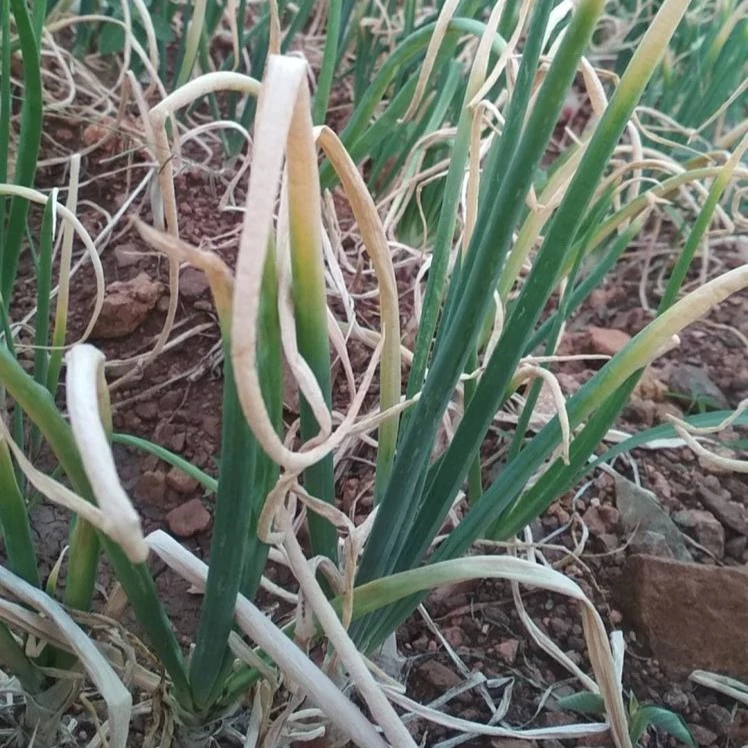
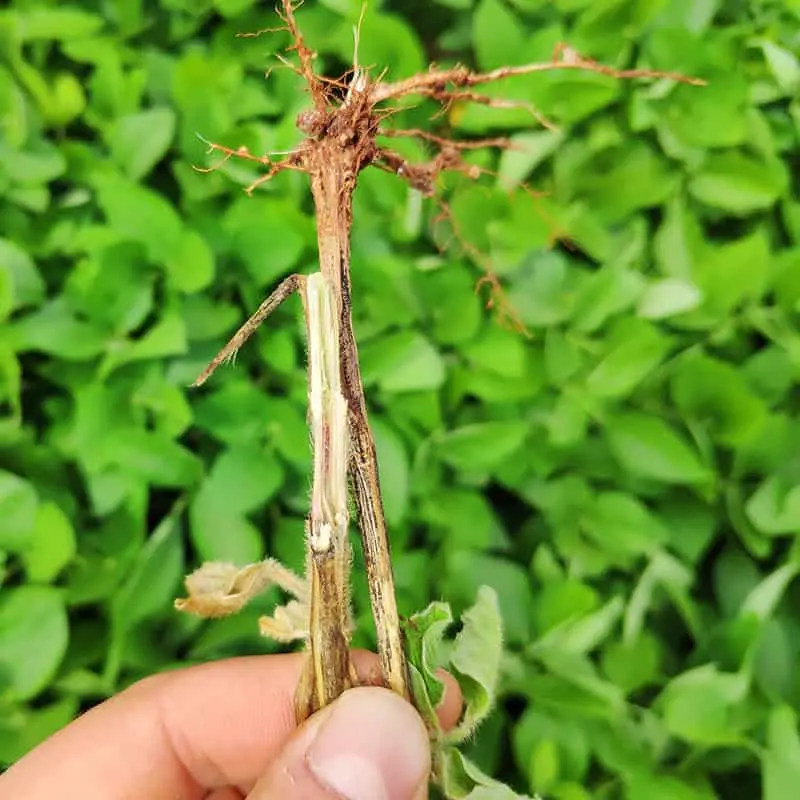
Understanding these symptoms is vital not only for diagnosis but also for distinguishing Fusarium wilt from other plant diseases that might present similar signs.
Life Cycle of Fusarium oxysporum
To effectively combat Fusarium wilt, one must understand the life cycle of its causative agent, Fusarium oxysporum. This soil-borne fungus is a master of survival, capable of lying dormant in the soil for years until conditions are favourable for its resurgence.
- Spore Germination: Fusarium oxysporum exists in the soil as chlamydospores, which are thick-walled, dormant spores that can survive in the absence of a host plant. When a susceptible plant is introduced into the environment, these spores germinate, producing hyphae that penetrate the plant’s roots.
- Infection: Once inside the plant, the fungus colonizes the vascular system, particularly the xylem vessels. This colonization is facilitated by the fungus’s ability to produce enzymes that break down plant cell walls, allowing it to spread throughout the plant’s vascular network.
- Spread within the Plant: As the fungus multiplies, it produces more spores within the plant’s tissues. These spores clog the xylem vessels, disrupting the flow of water and nutrients. This blockage is the primary cause of the wilting and yellowing symptoms observed in infected plants.
- Environmental Spread: Fusarium wilt can spread through contaminated soil, water, and even through the air when soil particles are dispersed by wind. Additionally, infected plant material can introduce the fungus to new areas, further complicating control efforts.
- Persistence in the Soil: After an infected plant dies, the fungus remains in the soil as chlamydospores, ready to infect the next susceptible crop. This persistence is what makes Fusarium wilt so difficult to eradicate.
Understanding this life cycle highlights the importance of an integrated approach to managing Fusarium wilt, as the fungus can strike at multiple points in the plant’s life and remain a threat even after the visible symptoms have disappeared.
Impact on Different Crops
Fusarium wilt is a versatile pathogen that affects a wide range of crops, each with its unique vulnerabilities and symptoms. The economic impact of Fusarium wilt is significant, as it affects some of the most important food and fiber crops globally.
- Tomatoes: One of the most commonly affected crops, Fusarium wilt in tomatoes leads to severe yield losses. Infected plants often show yellowing and wilting of the lower leaves, followed by stunted growth and eventual death. The fungus can persist in tomato fields for years, making crop rotation essential.
- Bananas: Fusarium wilt, also known as Panama disease in bananas, has caused widespread devastation in banana plantations worldwide. The disease primarily affects the Cavendish variety, which makes up a large portion of global banana production. Infected plants exhibit yellowing of the leaves, followed by collapse and death, often leading to total crop loss.
- Cotton: Fusarium wilt causes stunting and yellowing in cotton, particularly in younger plants. The disease can reduce cotton yields significantly, impacting both fiber quality and quantity.
- Other Crops: Fusarium wilt also affects a wide range of other crops, including potatoes, cucumbers, melons, and sweet potatoes. Each crop may exhibit slightly different symptoms, but the underlying cause and the damage are similar.
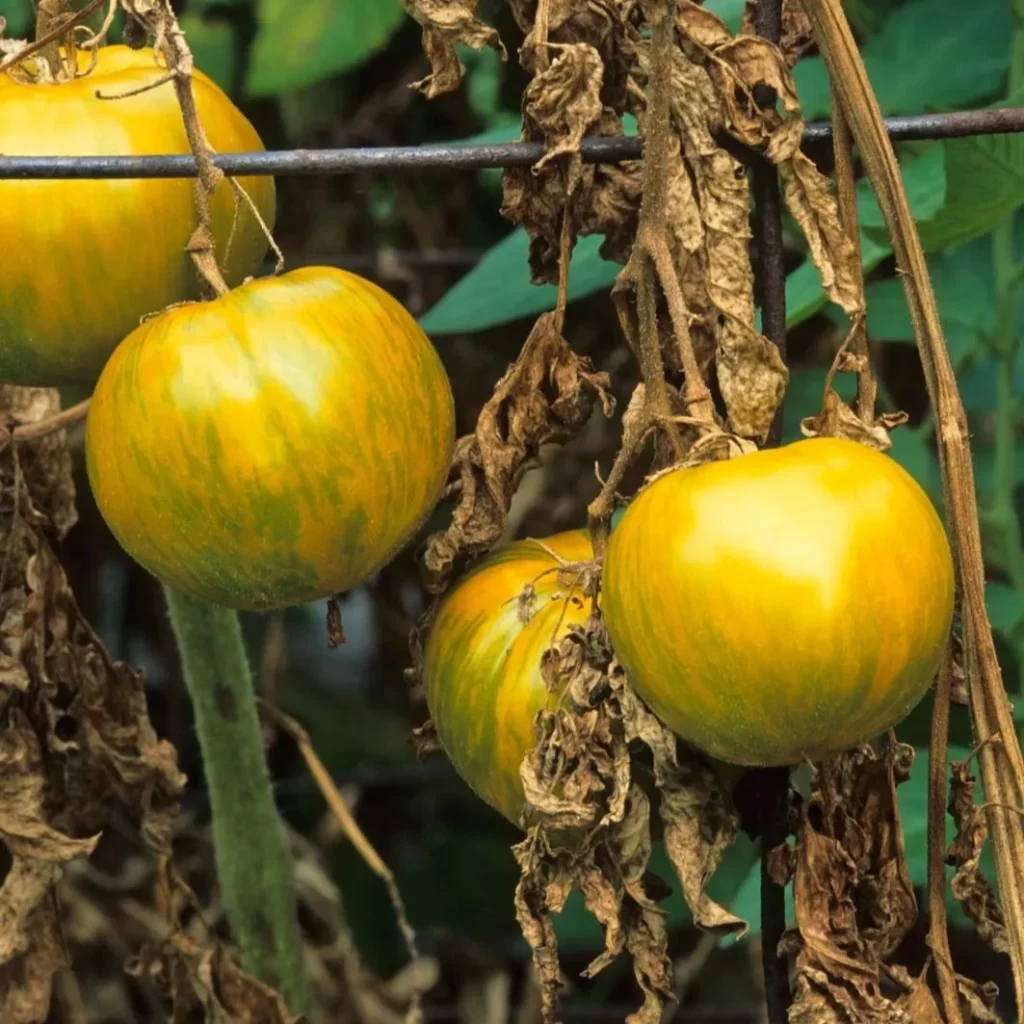
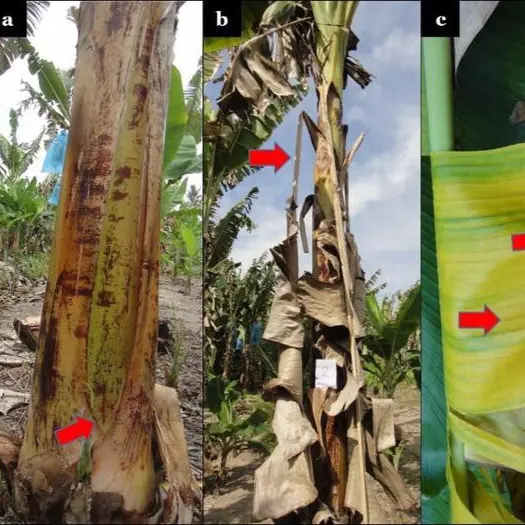
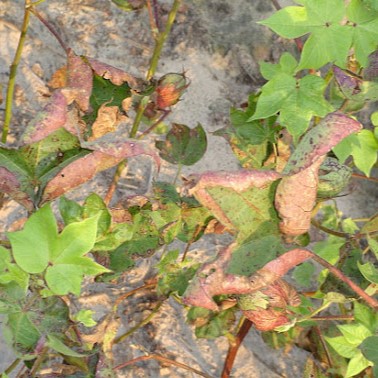
The impact of Fusarium wilt on these crops is not only a concern for farmers but also for the global food supply. As such, understanding and managing this disease is critical for food security and agricultural sustainability.
Prevention of Fusarium Wilt
Cultural practices are the foundation of Fusarium wilt prevention. These practices focus on creating an environment that is unfavorable for the fungus, thereby reducing the risk of infection.
- Crop Rotation: One of the most effective methods of preventing Fusarium wilt is crop rotation. By rotating susceptible crops with non-host plants, the fungus is deprived of its preferred host, reducing its population in the soil. For example, rotating tomatoes with cereals or legumes can help break the cycle of infection.
- Use of Disease-Free Seeds: Starting with clean, disease-free seeds is crucial in preventing the introduction of Fusarium wilt into new areas. Certified seeds are tested for the presence of the fungus and are a safer option for planting.
- Proper Irrigation Techniques: Overwatering or poorly drained soils create conditions that favour the growth of Fusarium oxysporum. Implementing proper irrigation techniques, such as drip irrigation, can help maintain optimal soil moisture levels and reduce the risk of waterlogging, which can exacerbate Fusarium wilt.
- Planting Resistant Varieties: Some plant varieties have been bred for resistance to Fusarium wilt. Using these resistant varieties can significantly reduce the incidence of the disease. However, it is important to note that resistance can vary, and in some cases, the fungus may overcome the plant’s defences.
- Sanitation and Cleanliness: Keeping the garden or farm clean is essential in preventing the spread of Fusarium wilt. Tools, equipment, and footwear should be sanitized regularly to avoid transferring the fungus from one area to another. Infected plant material should be removed and destroyed to prevent the fungus from spreading.
Healthy soil is the first line of defence against Fusarium wilt. By managing soil health, farmers can create conditions that are less conducive to the growth and spread of Fusarium oxysporum.
- Soil pH Adjustment: Fusarium wilt tends to thrive in acidic soils. Adjusting the soil pH to a more neutral or slightly alkaline range can help suppress the growth of the fungus. This can be achieved by adding lime or other alkaline amendments to the soil.
- Use of Organic Matter: Adding organic matter, such as compost or well-rotted manure, to the soil can improve soil structure and health. Organic matter helps promote the growth of beneficial microorganisms that can compete with or inhibit the growth of Fusarium oxysporum.
- Solarization: Solarization is a technique that involves covering the soil with clear plastic to trap solar energy and raise the temperature of the soil. This heat can kill or reduce the population of soil-borne pathogens, including Fusarium oxysporum. Solarization is most effective in warm, sunny climates and should be done during the hottest part of the year.
- Cover Cropping: Planting cover crops, such as rye or clover, can help improve soil health and reduce the incidence of Fusarium wilt. Cover crops can also suppress weeds and improve soil structure, making it more difficult for the fungus to establish itself.
- Adjust soil pH to 6.5-7.0 and use nitrate as a nitrogen source.
- Monitor fields for signs of the disease.
- Handpick and remove affected plants.
- Keep your equipment clean, particularly when working between different fields.
- Avoid damage to the plants during fieldwork.
- Apply a balanced fertilization with a special focus on the recommended potash.
- Plow and burn plant debris after harvest.
- Cover the infected area with black plastic foil in full sun for a month to kill the fungus.
- Plan rotations of up to 5-7 years to reduce levels of fungi in the soil.
Control Measures for Fusarium Wilt
Biological Control
Biological control involves the use of natural organisms to suppress or control the growth of Fusarium oxysporum. This approach is environmentally friendly and can be an effective component of an integrated pest management (IPM) strategy.
Several biological control agents, including bacteria and non-pathogenic strains of F. oxysporum that compete with the pathogens, have been used to control Fusarium wilt in some crops. Trichoderma viride can also be used to treat the seeds (10g/kg seed). Some soils suppress the growth of Fusarium. Adjusting the soil pH to 6.5-7.0 and using nitrate rather than ammonium as a nitrogen source can reduce the severity of the disease.
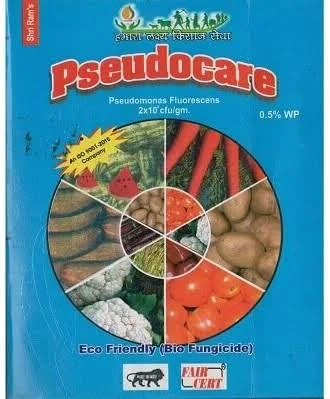
Pseudocare
- Pseudomonas Fluorescens 0.5% WP
- Type: Bio Fungicide
- For Vegetable Crops, Oilseeds, Cotton, Paddy, Maize, Rice, Pulses, Sugarcane, Ornamental Crops Fruit Crops
- Eco-Friendly (Bio Fungicide) Bacterial Cells of Pseudomonas are highly effective against root/stem rots, blast, sheath blight, leaf blights, and spots on fruits Vegetables, and soil-borne diseases
- More Details: kisanstore / Visit here (if 1st link is not working)
OrganicDews-Trichoderma Viride Powder
- Trichoderma viride is a high-efficiency organic biological agent. It produces antibiotics, nutrient competition, parasitic, cell-wall degradation, enzymes, and induced plant resistance mechanisms, which have antagonism effects on a variety of plant pathogenic fungi.
- Type: Bio Fungicide
- Trichoderma Viride improve the soil, break the knot, improve the soil permeability and oxygen supply of the root system.
- More Details: Amazon / Visit Organic Dews

- Beneficial Microbes: Certain beneficial microbes, such as Trichoderma species, have been shown to inhibit the growth of Fusarium oxysporum. These microbes can be applied to the soil or used as a seed treatment to protect plants from infection.
- Mycorrhizal Fungi: Mycorrhizal fungi form symbiotic relationships with plant roots, enhancing nutrient uptake and providing a degree of resistance against soil-borne pathogens like Fusarium oxysporum. Introducing mycorrhizal fungi into the soil can help plants resist Fusarium wilt and improve overall plant health.
- Nematodes: Certain nematodes, such as Steinernema species, can be used to target and kill the larvae of soil-dwelling pests that may create entry points for Fusarium wilt. These nematodes can be applied to the soil and are a natural way to reduce the population of pests that contribute to the spread of the disease.
Once Fusarium wilt has established itself in a field or garden, control becomes a more challenging task. However, with the right strategies, it is possible to manage the disease and minimize its impact on crops.
Chemical Control
Chemical control of Fusarium wilt is often seen as a last resort due to the potential environmental impact and the development of resistance in the fungus. However, in some cases, fungicides may be necessary to protect high-value crops.
Always consider an integrated approach with preventive measures together with biological treatments if available. Apply soil-based fungicides on contaminated locations if no other measures are effective. Drenching the soil with copper oxychloride (3g/l) of water before sowing/transplanting is also effective.
Select and apply ONLY ONE of the following products to your crops:
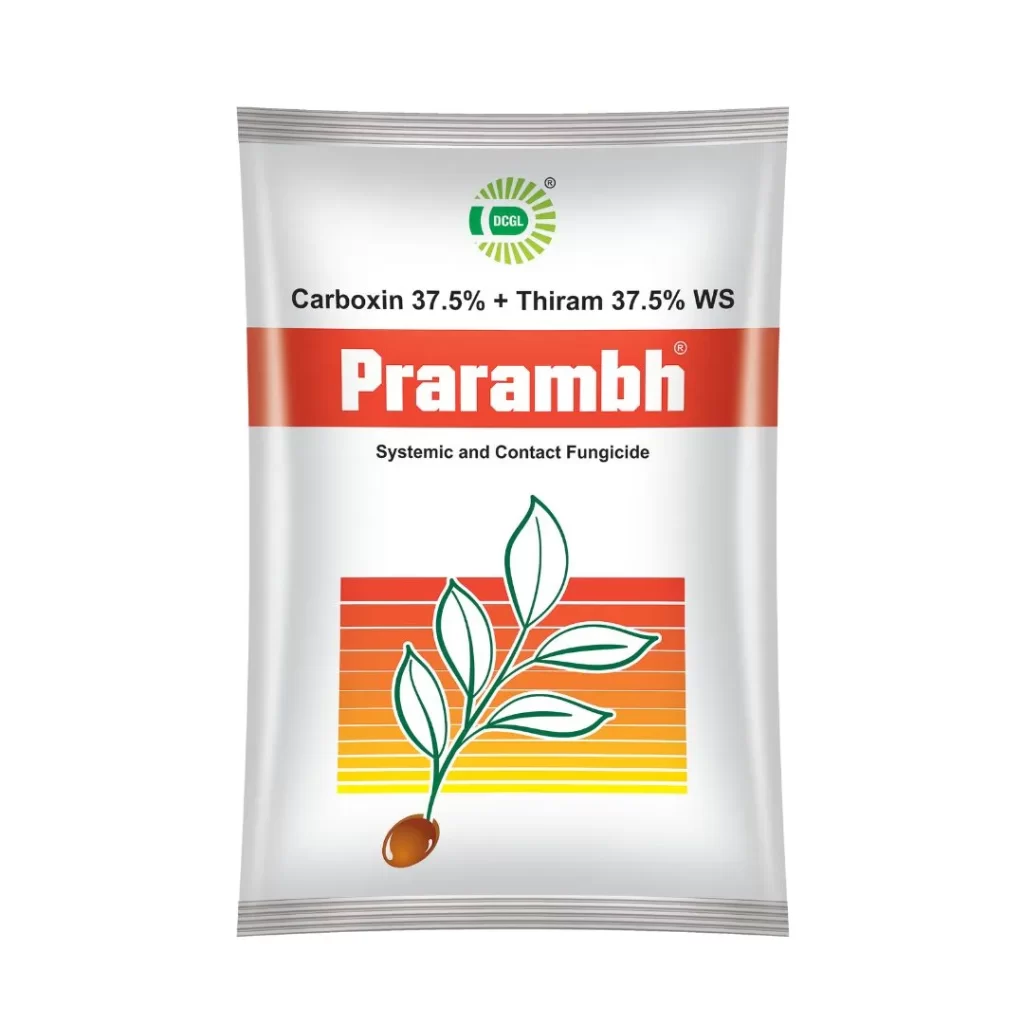
Prarambh by Dharmaj Crop Guard Ltd.
- Carboxin 37.5% WS, Thiram 37.5% WS
- It effectively controls seed and soil-borne diseases.
- For Pigeon Pea & Red Gram
- View Product: Dharmaj Crop

Vitavax Power by Dhanuka Agritech Ltd.
- Carboxin 37.5% WS, Thiram 37.5% WS
- Type: Broad-spectrum Fungicide
- For Wheat, Soybean, Peanut, Cotton, Pigeonpea
- View Product: Indiamart.com
- Fungicides: Certain fungicides, such as those containing active ingredients like chlorothalonil or thiophanate-methyl, can be effective against Fusarium wilt. These fungicides are typically applied as a soil drench or as a foliar spray, depending on the crop and the severity of the infection. It is important to follow the manufacturer’s instructions carefully to ensure safe and effective application.
- Soil Fumigation: Soil fumigation is a more aggressive chemical control method that involves applying fumigants to the soil to kill a wide range of soil-borne pathogens, including Fusarium oxysporum. Fumigation is typically used in high-value crops or in cases where the soil is heavily infested. However, it is important to note that fumigation can have negative effects on soil health and should be used with caution.
- Integrated Pest Management (IPM): Chemical control should be used as part of an integrated pest management strategy that includes cultural, biological, and chemical methods. This approach minimizes the reliance on chemicals and reduces the risk of developing resistant strains of Fusarium oxysporum.
Resistant Varieties
Plant breeders have developed a range of crop varieties that are resistant to Fusarium wilt. Using resistant varieties is one of the most effective ways to manage the disease, as these plants have been bred to withstand infection by Fusarium oxysporum.
- Development of Resistant Varieties: Plant breeders have used traditional breeding methods, as well as genetic modification, to develop resistant varieties of many crops, including tomatoes, bananas, and cotton. These resistant varieties often have enhanced immune responses or structural barriers that prevent the fungus from colonizing the plant.
- Challenges in Resistance: While resistant varieties can be highly effective, there are challenges to their use. In some cases, the fungus may evolve to overcome the plant’s defences, leading to the breakdown of resistance. Additionally, resistant varieties may not always be available for all crops or may come with trade-offs in terms of yield or other desirable traits.
- Implementation: For farmers, implementing resistant varieties requires careful planning and selection. It is important to choose varieties that are well-suited to the local growing conditions and to use them in combination with other management practices to ensure long-term effectiveness.
Sanitation Practices
Sanitation is a key component of Fusarium wilt control. By keeping fields, gardens, and equipment clean, farmers can reduce the spread of the disease and prevent reinfection.
- Cleaning Tools and Equipment: Tools and equipment should be thoroughly cleaned and disinfected before moving from one area to another. This includes shovels, hoes, pruning shears, and even footwear. Disinfecting tools with a solution of bleach or alcohol can help kill any fungal spores that may be present.
- Handling Infected Plants: Infected plants should be removed and destroyed as soon as they are identified. This helps prevent the spread of the fungus to healthy plants. Infected plant material should not be composted, as the fungus can survive in compost and reinfect plants when the compost is used.
- Quarantine Measures: When introducing new plants into the garden or field, it is important to quarantine them for a period of time to ensure they are not carrying Fusarium wilt. This can help prevent the introduction of the fungus into new areas.
Damage Caused by Fusarium Wilt
Fusarium wilt is not only a threat to plant health but also to the economic viability of agricultural enterprises. The damage caused by this disease can be both immediate and long-lasting, affecting everything from individual plants to entire agricultural systems.
Short-Term Damage
The most immediate impact of Fusarium wilt is the loss of plant health and productivity. Infected plants often show signs of wilting, yellowing, and stunted growth, leading to reduced yields and poor-quality produce.
- Visible Damage: The most obvious signs of Fusarium wilt are the physical symptoms seen in affected plants. Wilting, yellowing, and root rot are all visible indicators of the disease’s presence. These symptoms not only affect the aesthetic value of ornamental plants but also reduce the marketability of food crops.
- Yield Loss: Fusarium wilt can cause significant yield loss in affected crops. In some cases, the disease can wipe out entire fields, leading to total crop failure. This is particularly devastating for farmers who rely on high-value crops like tomatoes, bananas, or cotton for their livelihood.
- Quality Reduction: Even if infected plants manage to produce fruit or other products, the quality is often compromised. For example, fruits from infected tomato plants may be smaller, less flavorful, and more prone to rot. This reduction in quality can further reduce the economic value of the crop.
Long-Term Consequences
The long-term consequences of Fusarium wilt extend beyond the immediate growing season. Once a field is infested with Fusarium oxysporum, the fungus can persist in the soil for many years, making it difficult to grow susceptible crops in the same area.
- Soil Infestation: Fusarium wilt can lead to long-term soil infestation, where the fungus remains in the soil as dormant spores. This makes it challenging to grow susceptible crops in the same field without significant management efforts, such as crop rotation or soil fumigation.
- Economic Impact: The economic impact of Fusarium wilt can be devastating for farmers. The loss of crops, combined with the cost of control measures and the potential need to leave fields fallow, can lead to financial hardship. In some cases, entire farms may go out of business due to repeated Fusarium wilt outbreaks.
- Climate Change: Climate change may exacerbate the impact of Fusarium wilt. Changes in temperature, precipitation, and soil conditions can create environments that are more conducive to the growth and spread of Fusarium oxysporum. This could lead to more frequent and severe outbreaks in the future, further threatening global food security.
Conclusion
Fusarium wilt is a formidable challenge for farmers, gardeners, and researchers alike. Its ability to persist in the soil, spread through various means, and affect a wide range of crops makes it one of the most significant plant diseases in agriculture. However, by understanding the disease, recognizing its symptoms, and implementing a combination of prevention, control, and sanitation measures, it is possible to manage Fusarium wilt and reduce its impact.
The future of Fusarium wilt management lies in continued research and innovation. Advances in plant breeding, soil management, and biological control offer hope for more effective and sustainable solutions. As climate change continues to alter the agricultural landscape, it is more important than ever to remain vigilant and proactive in the fight against Fusarium wilt.
For farmers and gardeners, the key to success is to stay informed, implement best practices, and remain adaptable to the ever-changing challenges posed by this disease. By doing so, we can protect our crops, preserve our livelihoods, and ensure a more secure food future for all.
